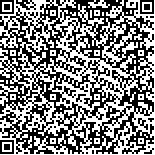| 本文已被:浏览 1971次 下载 1304次 |

码上扫一扫! |
|
|
| 4种常见经济滤食性贝类摄食活动对球等鞭金藻产生二甲基硫化物的影响 |
|
侯兴1,2,3, 王颖4, 刘天红4, 杜美荣1, 高亚平1, 姜娓娓1, 李凤雪1, 董世鹏1,2,3, 李文豪1,2,3, 蒋增杰1,5
|
|
1.中国水产科学研究院黄海水产研究所 农业农村部海洋渔业可持续发展重点实验室 山东 青岛 266071;2.上海海洋大学水产与生命学院 上海 201306;3. 山东省海洋生物研究院 山东 青岛 266104;4.山东省海洋生物研究院 山东 青岛 266104;5.青岛海洋科学与技术试点国家实验室海洋渔业科学与食物产出过程功能实验室 山东 青岛 266071
|
|
| 摘要: |
| 本研究以紫贻贝(Mytilus edulis)、长牡蛎(Crassostrea gigas)、栉孔扇贝(Azumapecten farreri)和菲律宾蛤仔(Ruditapes philippinarum) 4种常见经济滤食性贝类作为研究对象,选取二甲基巯丙酸(DMSP)含量较高的球等鞭金藻(Isochrysis galbana)为实验藻种,在室内模拟了静水和扰动2种条件下水体中二甲基硫化物[DMS(P)]的变化情况,并分析了贝类粪便中DMS(P)的释放过程对水体DMS(P)浓度的影响。结果显示,在静水条件下,4种贝类的摄食对微藻二甲基硫(DMS)的释放无显著的促进作用(P>0.05),但通过生物沉积显著降低了水体中颗粒态DMSP (DMSPp)含量(P<0.05),其中,约40%摄入的DMSPp转化为粪便DMSP (DMSPf)。扰动条件显示,DMSPf会随水体扰动而扩散于水体中,进而增加水体中总悬浮态DMAP (DMSPt)和DMS的量;原水总水体扰动实验中,与对照组(0 r/min)相比,实验组DMS和DMSPt最大,分别增加了16.8%和38.5倍。定量粪便扰动实验显示,在装有0.08 g粪便的1 L去DMS海水中,随着扰动程度的增加,水体中的DMS和DMSPt也相应增加,与对照组的7.6和906.4 nmol/L相比,最大可升高至21.3和2505.9 nmol/L,分别增加了180%和174%。研究结果为深入认识贝类摄食活动对海洋硫循环的影响提供了数据支撑。 |
| 关键词: 滤食性贝类 摄食活动 浮游植物 二甲基硫化物 |
| DOI:10.19663/j.issn2095-9869.20200327001 |
| 分类号: |
| 基金项目: |
|
| Effects of feeding activities by four common economic bivalves on the production of dimethyl sulfur compounds from Isochrysis galbana |
|
HOU Xing,WANG Ying,LIU Tianhong,DU Meirong,GAO Yaping,JIANG Weiwei,LI Fengxue,DONG Shipeng,LI Wenhao,JIANG Zengjie
|
|
1.Yellow Sea Fisheries Research Institute, Chinese Academy of Fishery Sciences, Key Laboratory of Sustainable Development of Marine Fisheries, Ministry of Agriculture and Rural Affairs, Qingdao, Shandong 266071, China;2.College of Fisheries and Life Science, Shanghai Ocean University, Shanghai 201306, China;3.Marine Biology Institute of Shandong Province Qingdao, Shandong 266104;4.Laboratory for Marine Fisheries Science and Food Production Processes, Pilot National Laboratory for Marine Science and Technology (Qingdao), Qingdao, Shandong 266071, China
|
| Abstract: |
| Dimethyl sulfide (DMS) is an important biological sulfide in the ocean that can alleviate global warming. Dimethylsulfoniopropionate (DMSP) is the DMS precursor and mainly exists in phytoplankton. Filter-feeding bivalves are an important ecological group in coastal ecosystems, and their phytoplankton feeding activities may affect the production of dimethyl sulfide. In this study, four common economic filter- feeding bivalves, the Pacific oyster Crassostrea gigas, blue mussel Mytilus edulis, Zhikong scallop Chlamys farreri, and manila clam Ruditapes philippinarum were selected as experimental subjects, and fed them on the microalgae Isochrysis galbana with higher dimethylsulfoniopropionate (DMSP) contents. Variations of dimethyl sulfide (DMS) and DMSP in the water under static and disturbance conditions were monitored in a laboratory simulation experiment, and the effects of DMS(P) release from bivalve feces were analyzed. The results showed that the bivalves'feeding activities on phytoplankton had no significant effect on the release of DMS (P>0.05) under static conditions, but the concentration of DMSPp was significantly reduced by biodeposition (P<0.05), ~40% of the DMSPp intake was converted to fecal DMSP (DMSPf). DMSPf diffused into the water under disturbance conditions, and increased the concentrations of total suspended DMSP (DMSPt) and DMS. The disturbance experiment of total original water revealed that compared to the control group (0 r/min), the DMS and DMSPt in the treatment group, can increased up to 16.8% and 38.5% respectively. Further disturbance experiment of quantitative fecal found that the DMS and DMSPt concentrations in 1 L of seawater containing 0.08 g of feces increased following disturbance. DMS and DMSPt increased from 7.6 nmol/L and 906.4 nmol/L (static condition) to a maximum of 21.3 nmol/L and 2 505.9 nmol/L (disturbance condition), representing increases of 180% and 174%, respectively. This study contributes to a better understanding of how bivalves' feeding activities influence the marine sulfur cycle, the follow-up research can be extended to the field enclosure experiment and aquaculture area investigation. |
| Key words: Filter-feeding bivalve Feeding activity Phytoplankton Dimethyl sulfur compound |